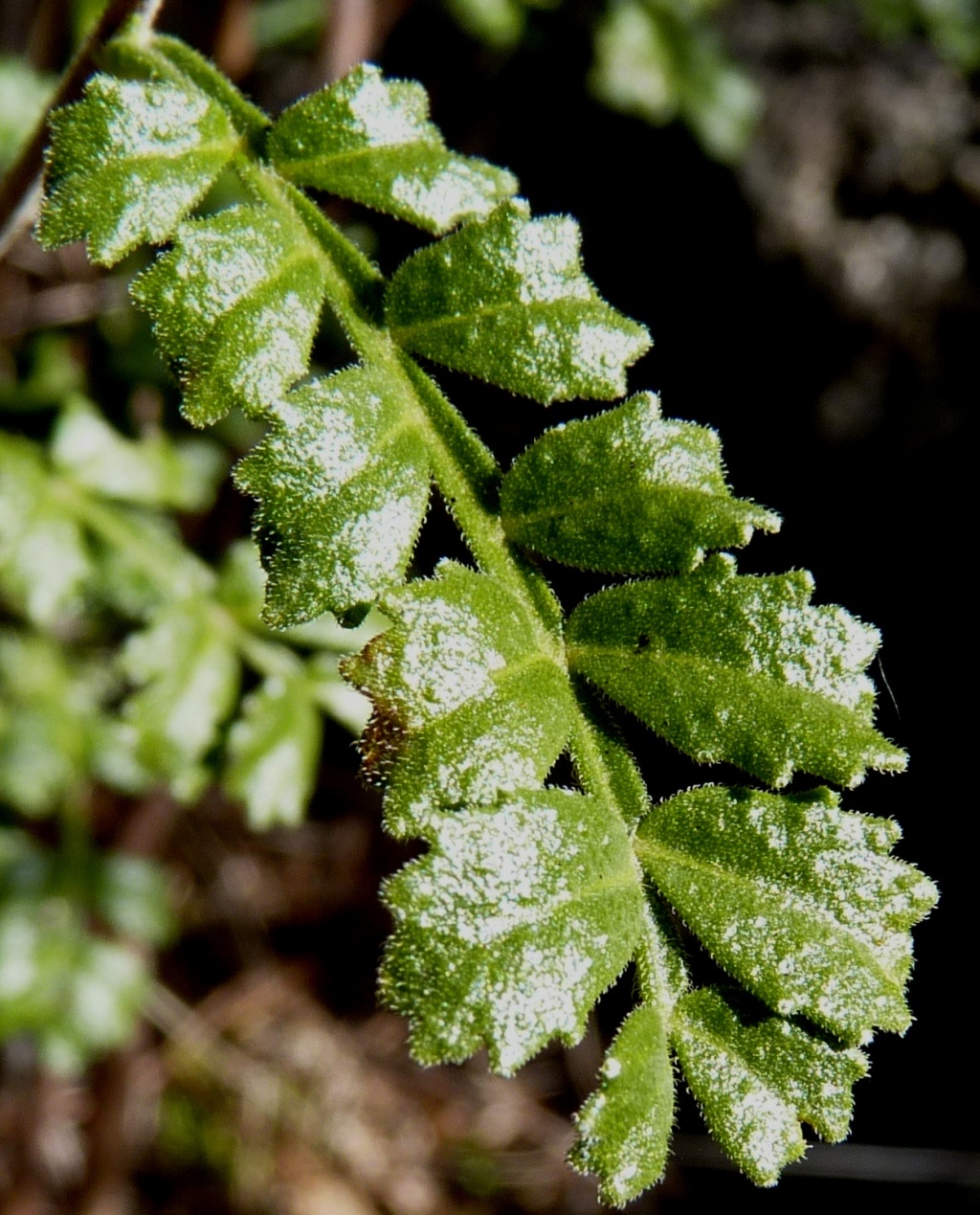Dodonaea boroniifolia
G.Don Hairy Hop-bushDioecious or rarely polygamodioecious, spreading to erect shrub to 2(–4) m high; branches terete or slightly angular, densely covered with simple, arched hairs. Leaves imparipinnate, 6–40 mm long (excluding petiole), with 6–16 lateral leaflets; leaflets narrowly angular-obovate to obovate, 2.5–10 mm long, 1.5–5.5 mm wide, apex 3–6-toothed or -lobed, the teeth broadly acute to obtuse, the central one often recurved, margins revolute or recurved, surfaces glandular-viscid, glabrous to pubescent; petiole 1–8 mm long. Flowers paired or in threes, axillary; pedicels 4–8(–12) mm long; sepals 4, lanceolate to ovate, 2–4 mm long, viscid, caducous; stamens 8–10, longer than sepals; ovary densely pilose. Capsule 4-winged, broadly elliptic in outline, 10–20 mm long, 12–18 mm wide, glabrous or sometimes pubescent, wings 2.5–5 mm wide, membranous. Seed lenticular, strongly compressed towards margin, 2.1–2.6 mm long, black, dull, exarillate. Flowers autumn and spring.
VRiv, GipP, Gold, CVU, GGr, NIS, HSF, HNF, VAlp. Also SA, Qld, NSW. Occasional in north-central and north-east Victoria (Albury-Wangarrata-Myrtleford area, Strathbogie Ranges, Pyrenees-Bealiba Ranges, Pine Mountain) and in Gippsland near Maffra. Grows on or near granite or sandstone outcrops in eucalypt woodland, shrubland and heath.
Duretto, M.F. (1999). Sapindaceae. In: Walsh, N.G.; Entwisle, T.J., Flora of Victoria Vol. 4, Cornaceae to Asteraceae, pp. 139–149. Inkata Press, Melbourne.
 Spinning
Spinning

